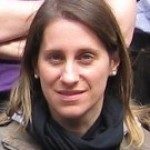Link to Pubmed [PMID] – 12453220
Mol. Microbiol. 2002 Dec;46(5):1345-51
Candida albicans is the single, most frequently isolated human fungal pathogen. As with most fungal pathogens, the factors which contribute to pathogenesis in C. albicans are not known, despite more than a decade of molecular genetic analysis. Candida albicans was thought to be asexual until the discovery of the MTL loci homologous to the mating type (MAT) loci in Saccharomyces cerevisiae led to the demonstration that mating is possible. Using Candida albicans mutants in genes likely to be involved in mating, we analysed the process to determine its similarity to mating in Saccharomyces cerevisiae. We examined disruptions of three of the genes in the MAPK pathway which is involved in filamentous growth in both S. cerevisiae and C. albicans and is known to control pheromone response in the former fungus. Disruptions in HST7 and CPH1 blocked mating in both MTLa and MTL(alpha) strains, whereas disruptions in STE20 had no effect. A disruption in KEX2, a gene involved in processing the S. cerevisiae pheromone Mf(alpha), prevented mating in MTL(alpha) but not MTLa cells, whereas a disruption in HST6, the orthologue of the STE6 gene which encodes an ABC transporter responsible for secretion of the Mfa pheromone, prevented mating in MTLa but not in MTL(alpha) cells. Disruption of two cell wall genes, ALS1 and INT1, had no effect on mating, even though ALS1 was identified by similarity to the S. cerevisiae sexual agglutinin, SAG1. The results reveal that these two diverged yeasts show a surprising similarity in their mating processes.
